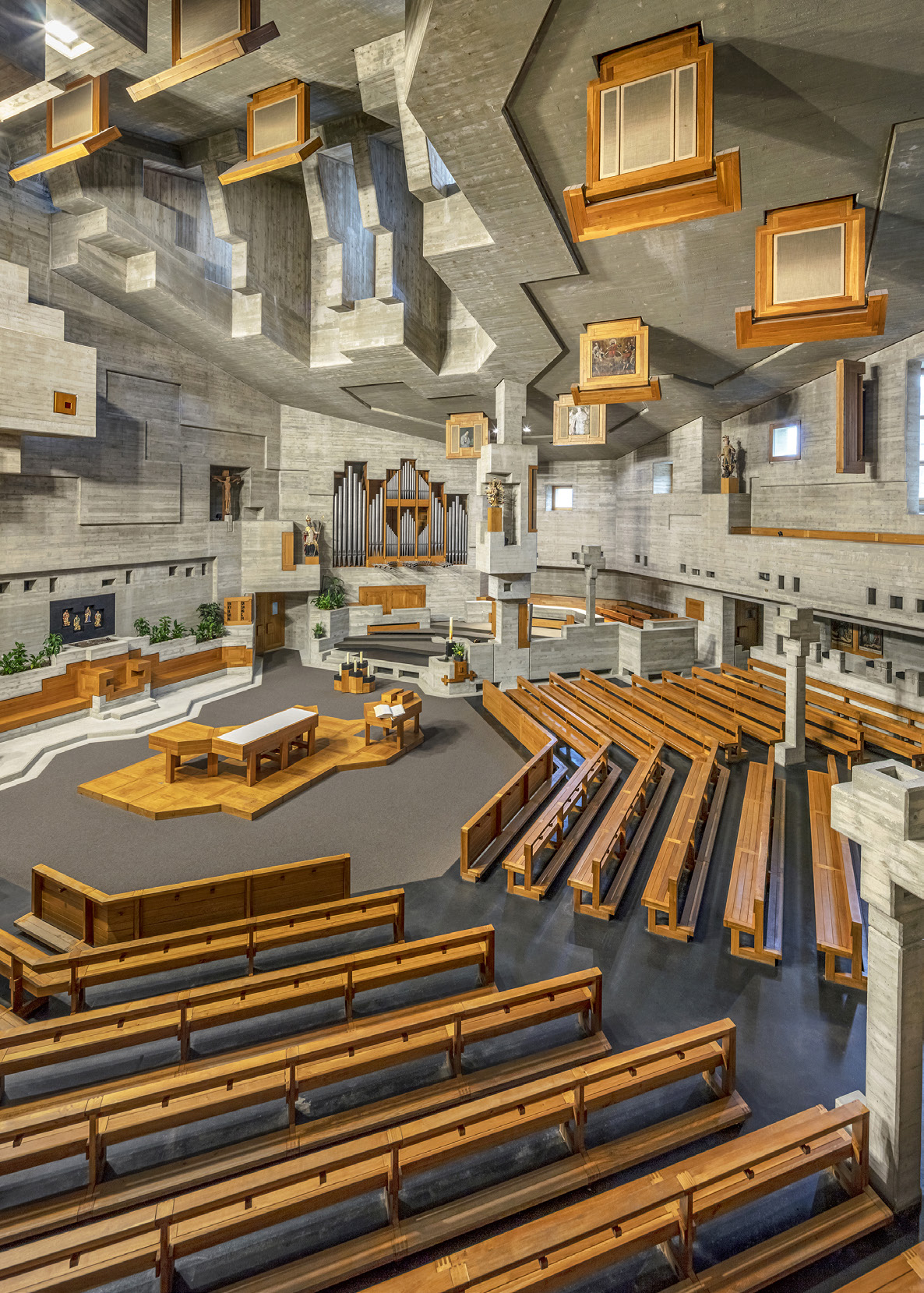
In Hegel’s view, questioning the sacred seamlessly intertwines with the very essence of architecture – namely “that which binds together a multitude of souls”. The Church assumes a fundamentally spiritual significance, predominantly and comprehensively conveyed through its architectural space. Meanwhile, its surroundings, the way it is expressed externally, encompasses another layer of meaning that falls outside the realm of the liturgical movement. The exterior is a source of light that structures movement in space, but also the place where another meaning is materialised, more clerical than spiritual, a meaning encapsulated by the political dimension of its form. This dimension is a question of scale, expressed through the monumentality of a singular object, but also through the multiplication of this object across a territory. During the 20th century, just over a hundred churches and one hundred and fifty chapels were built in Valais. These projects fulfilled their political role because they gave the ecclesiastical institution a territorial dimension, but did they respond to the spiritual mission as professed by the community gathered around Romano Guardini in Rothenfels, Germany, during the second quarter of the 20th century? Among countless projects that reverently extol the materials, form, and technical potential of reinforced concrete, some leverage the formal potential of space in connection with a liturgical renewal, aiming to rediscover monastic spirituality against the triumphant Church (Ecclesia triumphans).







